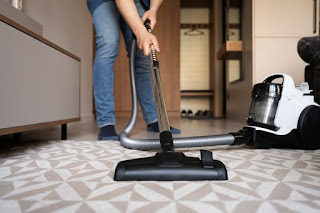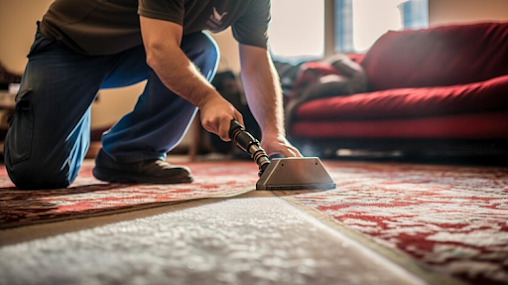The Difference Between Different Carpet Cleaning Methods?
Carpets are a staple in many homes and businesses, providing comfort, warmth, and aesthetic appeal. However, over time, carpets can accumulate dirt, stains, and allergens, compromising indoor air quality and overall cleanliness. Regular carpet cleaning is essential for maintaining a clean and healthy indoor environment, and at Carpet Cleaning NYC, we specialize in providing professional carpet cleaning services tailored to your needs.
We'll explore the different carpet cleaning methods available and discuss their benefits and drawbacks. Whether you're dealing with stubborn stains, heavy foot traffic, or general wear and tear, understanding the differences between carpet cleaning methods can help you make an informed decision about the best approach for your carpets.
Steam Cleaning (Hot Water Extraction)
Steam cleaning, also known as hot water extraction, is one of the most popular and effective carpet cleaning methods available. This method involves the use of hot water and detergent, which are injected into the carpet fibers at high pressure. The combination of heat and agitation helps to loosen dirt, stains, and allergens, which are then extracted using a powerful vacuum.
The benefits of steam cleaning are numerous. Not only does it provide a deep and thorough clean, but it also helps to sanitize and deodorize carpets, leaving them looking and smelling fresh. Additionally, steam cleaning is safe for most types of carpets and is particularly effective in removing stubborn stains and ground dirt.
At Carpet Cleaning NYC, we utilize state-of-the-art steam cleaning equipment and eco-friendly cleaning solutions to deliver superior results. Our certified technicians are trained to assess your carpets' specific needs and customize the steam cleaning process to achieve the best possible outcome.
Dry Carpet Cleaning
Dry carpet cleaning is an alternative method that uses specialized cleaning agents and equipment to clean carpets without the use of water. Instead, dry cleaning compounds are applied to the carpet surface, where they attract and encapsulate dirt and debris. The compounds are then agitated and vacuumed away, leaving carpets clean and dry.
One of the primary benefits of dry carpet cleaning is its fast drying time. Since no water is used in the process, carpets can be used immediately after cleaning, making it ideal for high-traffic areas or busy households. Additionally, dry carpet cleaning is less likely to cause shrinkage or damage to carpets, making it a safe and effective option for delicate or sensitive materials.
At Carpet Cleaning NYC, we offer dry carpet cleaning services for customers seeking a quick and convenient cleaning solution. Our dry cleaning process is gentle yet effective, leaving your carpets clean, fresh, and ready to use in no time.
Bonnet Cleaning
Bonnet cleaning is a surface-level cleaning method that involves the use of a rotary floor machine with a cleaning pad soaked in a cleaning solution. The machine is used to agitate the carpet fibers and absorb dirt and debris from the surface. While bonnet cleaning can effectively remove surface-level dirt and stains, it may not penetrate deep into the carpet fibers, making it less effective for thorough cleaning.
One of the primary benefits of bonnet cleaning is its speed and efficiency. Since it focuses on surface-level cleaning, bonnet cleaning can be completed quickly, making it suitable for regular maintenance cleaning or spot cleaning in between deep cleaning sessions. However, it may not be suitable for heavily soiled carpets or deep stains, which may require more intensive cleaning methods.
At Carpet Cleaning NYC, we offer bonnet cleaning services for customers seeking a quick and convenient cleaning solution for lightly soiled carpets. Our experienced technicians use professional-grade equipment and cleaning agents to achieve optimal results, leaving your carpets looking clean and refreshed.
Encapsulation Cleaning
Encapsulation cleaning is a relatively new carpet cleaning method that uses specialized cleaning agents to encapsulate dirt and debris for easy removal. The cleaning agents are applied to the carpet surface, where they form microscopic crystals that encapsulate dirt and soil. Once dry, the crystals are vacuumed away, leaving carpets clean and residue-free.
One of the primary benefits of encapsulation cleaning is its effectiveness in removing soil and preventing re-soiling. Since the cleaning agents encapsulate dirt and debris, they are less likely to attract new soil, helping to keep carpets cleaner for longer periods. Additionally, encapsulation cleaning requires less water than traditional cleaning methods, making it a more environmentally friendly option.
At Carpet Cleaning NYC, we utilize advanced encapsulation cleaning technology to deliver superior results. Our encapsulation cleaning process is safe, efficient, and environmentally friendly, providing a deep and thorough clean without the use of excessive water or harsh chemicals.
Carpet Shampooing
Carpet shampooing is a traditional carpet cleaning method that involves the application of a foamy shampoo solution to carpets, followed by agitation and extraction. The shampoo solution helps to break down dirt and stains, which are then lifted away using a carpet cleaning machine or extractor. While carpet shampooing can effectively remove dirt and stains, it may leave behind residue and require longer drying times.
One of the primary benefits of carpet shampooing is its effectiveness in deep cleaning heavily soiled carpets and removing tough stains. The foamy shampoo solution penetrates deep into the carpet fibers, lifting away dirt and debris for a thorough clean. However, carpet shampooing may not be suitable for all carpet types and may require longer drying times than other cleaning methods.
At Carpet Cleaning NYC, we offer carpet shampooing services for customers seeking a deep and thorough cleaning solution for heavily soiled carpets. Our experienced technicians use professional-grade shampoo solutions and equipment to achieve optimal results, leaving your carpets looking clean, fresh, and revitalized.
Comparison of Cleaning Methods
Now that we've explored the different carpet cleaning methods available, let's compare their key features and benefits:
Steam cleaning: Deep and thorough cleaning, effective for removing deep-seated dirt and stains, suitable for most carpet types.
Dry carpet cleaning: Fast drying time, safe for delicate or sensitive carpets, ideal for high-traffic areas.
Bonnet cleaning: Surface-level cleaning, quick and efficient, suitable for regular maintenance cleaning.
Encapsulation cleaning: Prevents re-soiling, is environmentally friendly, and requires less water.
Carpet shampooing: Effective for deep cleaning heavily soiled carpets, removes tough stains, and may require longer drying times.
When choosing the best carpet cleaning method for your needs, consider factors such as carpet condition, level of soiling, and desired outcomes. At Carpet Cleaning NYC, we offer a range of carpet cleaning services to suit your needs, with professional technicians and state-of-the-art equipment to deliver superior results every time.
Frequently Asked Questions (FAQ)
Q: How often should I have my carpets cleaned?
A: We recommend having your carpets professionally cleaned at least once a year to maintain cleanliness and prolong their lifespan. However, high-traffic areas or households with pets or children may require more frequent cleaning.
Q: How much does professional carpet cleaning cost?
A: The cost of professional carpet cleaning depends on factors such as the size of the area, the level of soiling, and the chosen cleaning method. At Carpet Cleaning NYC, we offer competitive pricing and free estimates for all our services.
Q: Is professional carpet cleaning safe for pets and children?
A: Yes, professional carpet cleaning is safe for pets and children when performed by trained and certified technicians using eco-friendly cleaning solutions. Our cleaning methods are designed to remove dirt, stains, and allergens while minimizing environmental impact and ensuring safety.



Comments
Post a Comment